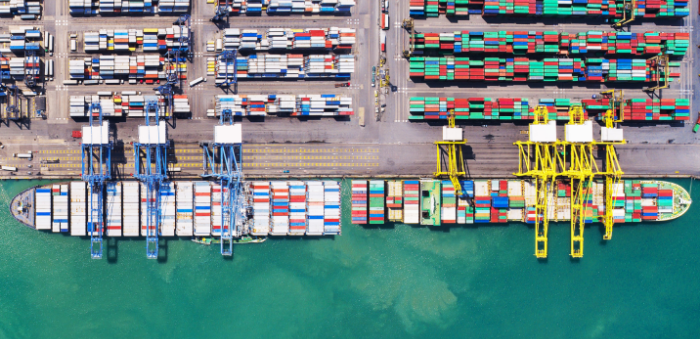The International Transport Forum published a report assessing the affect of alliances on the maritime transport chain and its main stakeholders. It also analyses their impacts on competition and what benefits they may bring, as well as policy options for governments.
Alliances have increased a lot in the container shipping, with around 95% of the major East-West container trades covered by carriers that form part of three global alliances. Namely, 2M, Ocean and THE Alliance represent about 80% of total container trade and operate around 95% of the total ship capacity on East-West trade lanes, where the major containerised flows take place.
[smlsubform prepend=”GET THE SAFETY4SEA IN YOUR INBOX!” showname=false emailtxt=”” emailholder=”Enter your email address” showsubmit=true submittxt=”Submit” jsthanks=false thankyou=”Thank you for subscribing to our mailing list”]
According to the report, alliances have enabled carriers to operate mega-ships, reducing unit costs, however there is a link between alliances and overcapacity. Specifically, alliances have limited the possibilities of carriers to be different from each other. This has also led to lower service frequencies, less direct port-toport connections, reduced schedule reliability and longer waiting times. As a result, total transport times have been increased along with delivery uncertainty for various shippers.
Moreover, alliances lead to concentration of port networks and bigger cargo shifts from one port to another, as within ports, the buying power of the alliance carriers can create destructive competition between terminal operators and between other port service providers. This can reduce the rates of return on investment for the port industry, impact smaller container ports and disappear smaller independent terminal operators, the report added.
It also noted that alliances frequently put pressure for publicly funded infrastructure upgrades to be carried out to support the use of megaships, while these expenditures often prove uneconomical.
Continuing, the International Transport Forum Alliances reports that alliances could raise competition concerns, as the top four carriers account for 60% of the global container shipping market in 2018. In fact, the market share of the biggest carrier (19%) is larger than the market share of any global liner alliance before 2012, which shows the different character of current alliances.
When describing the implications of alliances, the report concludes to three main concerns:
- Alliances represent barriers to entry on East-West trades, with only the largest companies able to compete on price for Asia-Europe services outside an alliance structure;
- Alliances could be vehicles for collusion between carriers, as they provide carriers with in-depth insights on the cost structures of their competitors;
- Alliances give considerable bargaining power to carriers in regard to ports and terminals.
In order to mitigate these concerns, the report provides three recommendations.
Adopt a presumption toward repeal of shipping-specific block exemptions from competition law
A repeal of block exemptions is not likely to end current and future alliances, but it would ensure greater scrutiny of individual alliances and thus more effectively prevent any anticompetitive conduct in the sector. To achieve this, the European Commission could provide temporary guidelines on how to treat liner shipping in EU antitrust law.
Improve project appraisal for port and hinterland infrastructure and adopt common principles for port pricing
A large part of the investment needed to upgrade ports to handle mega-ships is publicly funded. The report says that it is important these public expenditures to be based on sound economic assessments and that risk-minimisation strategies are in place.
Specifically, new port and hinterland transport projects should be based on sound projections of cargo flows, especially from shippers. Demands from carriers for new facilities should also be supported by possible commitments, to limit the risk that publicly financed ports will be underused.
Establish more coherent ports policies to clarify roles and limit risk of over-capacity
Governments should clarify which ports will service mega-ships and which ports have different roles. Cooperation between ports is important to provides a significant source of countervailing power under the increasing concentration of the shipping industry.
In addition, collaboration between terminals could enhance the efficiency of the maritime supply chain. So, Governments should consider how they could enable facility sharing in ports, without introducing new sector-specific block exemptions from competition law.
Finally, more collaboration between the different stakeholders in the maritime logistics chain could reduce the inefficiencies in the whole chain.
You may see more details in the PDF herebelow





























































